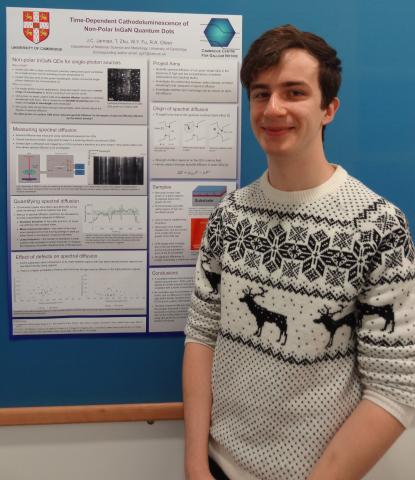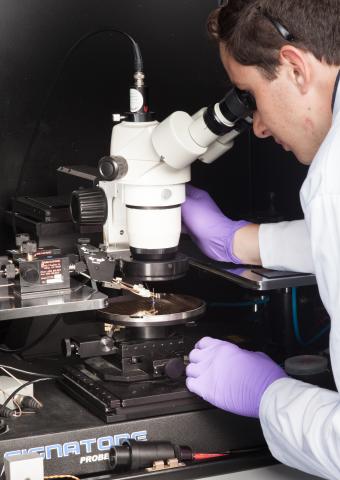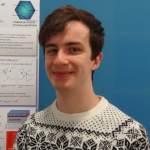John explains his path to becoming a PhD student in the GaN group.
Download John's researcher profile as a PDF
Contact details and more information on John's research

How did you join the Cambridge Centre for Gallium Nitride?
I worked in the group as a fourth-year undergraduate at Cambridge, working on a project to investigate the instability in light emission from some nanostructures called quantum dots. I enjoyed the project - and I was lucky enough to be able to stay on to study for a PhD.
What do you like best about working in the group?
I spend most of my time now working out how to make photonic structures, such as pillars a thousandth of a millimetre wide, to contain the quantum dots I looked at in my fourth-year project and turn them into functioning quantum light sources. To do this, I’ve had to learn how to use a lot of equipment and a large number of techniques in the University’s cleanrooms, and it’s been really interesting to see some of what goes into making the electronic devices we rely on every day. I also enjoy the practical side – it’s very rewarding to see one of your own hand-made LEDs light up! My favourite aspect, though, is being given the freedom to come up with my own process and try new things. Using a novel material like non-polar GaN to make structures that nobody else has tried making before is a bit daunting – but getting to try a process and see what happens is very exciting.
Where do you see nitrides in future?
I think we’ll be seeing them everywhere – the scientific advances in the materials science of GaN have made LED lighting a huge success story already, with more improvements in price and performance to come; current work on GaN for power electronics means that we might start seeing these materials involved in next-generation mobile transmitters, electric cars and electricity networks; and the potential applications for quantum light sources might mean that III-nitrides start to pervade secure communications and computing, too.




